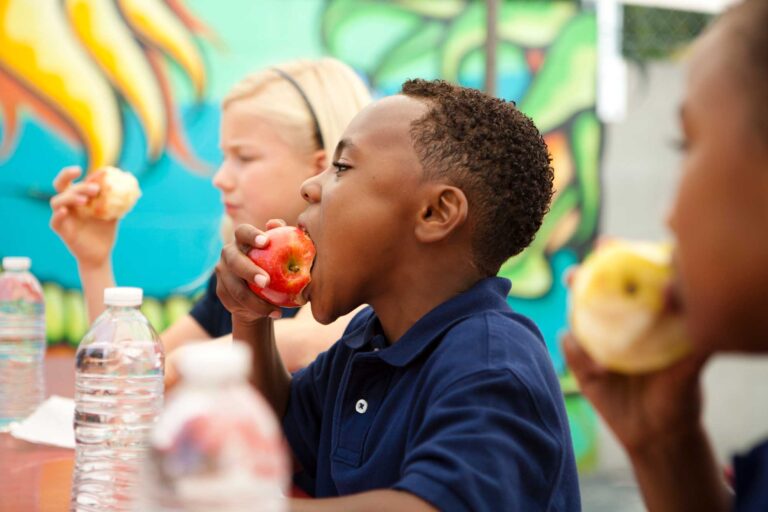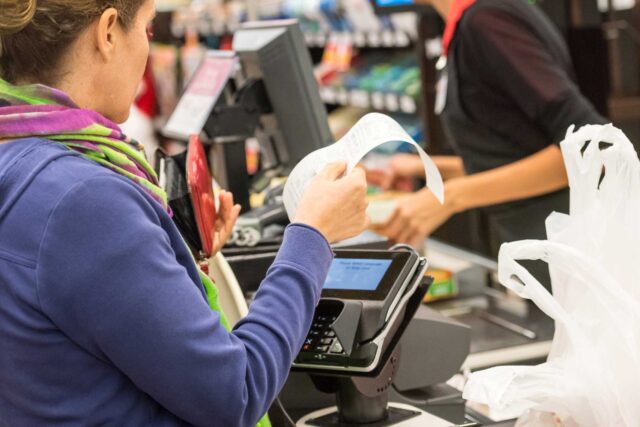Food and beverage prices rose by 8% between spring 2021 and spring 2022, outstripping most other categories of inflation that affect family budgets and hitting low-income families particularly hard. As prices continue to climb, families may be struggling to secure adequate food. For those with schoolchildren, access to school meals may hold promise as a buffer against price increases.
Even before inflation took off, the pandemic created significant disruptions for some families. Between 2019 and 2020, food insecurity had jumped nationally among households with children, although it did not grow for all households. In spring 2020, 14% of California households with schoolchildren lacked access to sufficient food, based on the Census Household Pulse Survey. While the number fell to 10% in fall 2021 (and remained essentially the same in spring 2022), disparities across demographic groups continue to be wide: low-income, Black, and Latino families report food insufficiency at sharply higher rates than families overall.
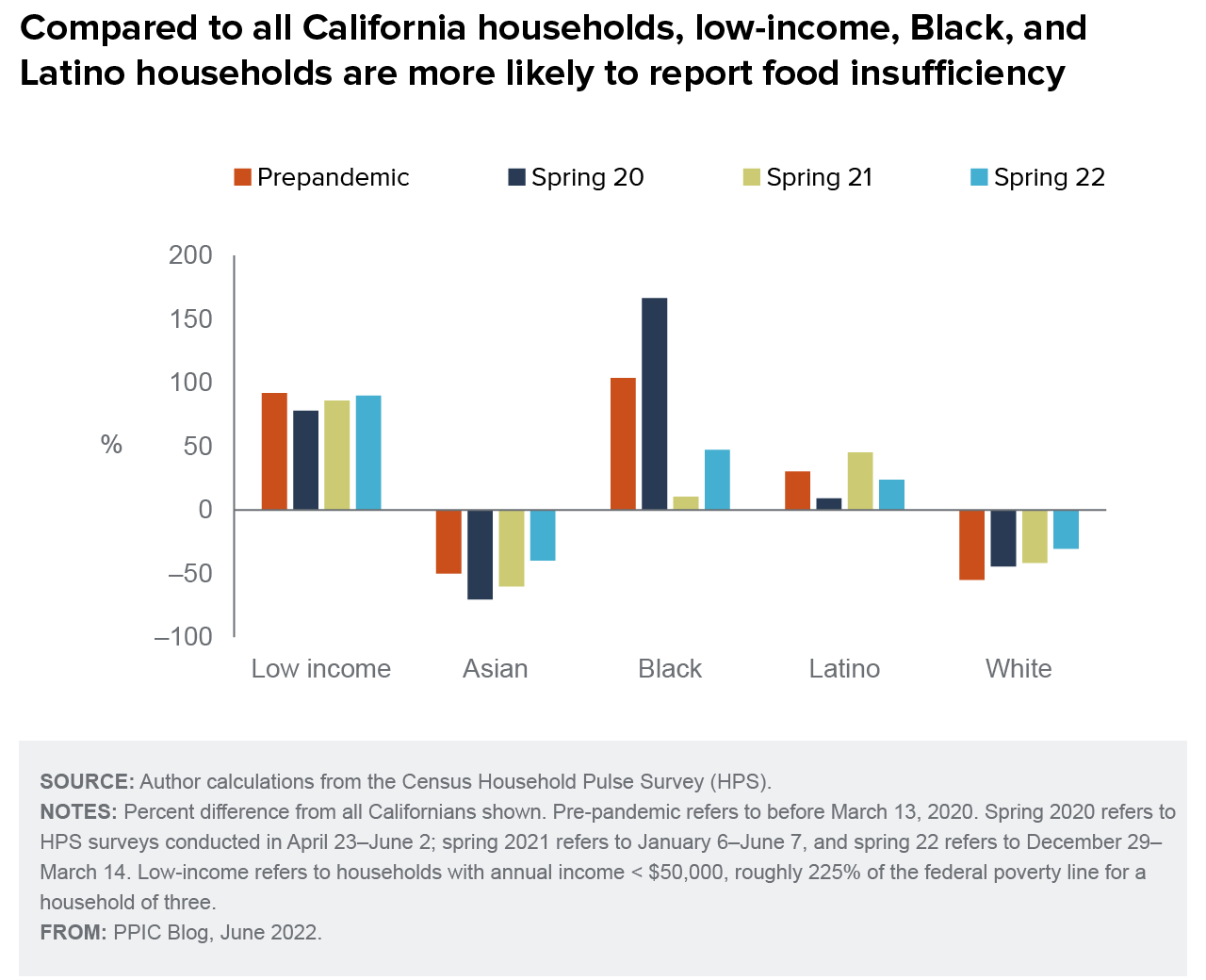
Pandemic responses from nutrition assistance programs have helped families who faced pandemic disruptions. All schoolchildren were able to receive free school meals through efforts supported by federal funds. But with most schools physically closed, only 25 million lunches monthly reached households in fall 2020, compared with 55 million a year before. A bright spot was a rise in the number of school breakfasts, which schools provided in the same numbers as lunch—likely because districts could bundle meals for pick-up.
When most schools returned to in-person instruction in 2021–22, meal provision rebounded to 53 million lunches monthly (as of fall 2021), and breakfast and lunch continued to be free to all students. However, early data shows that 3% fewer lunches and 10% fewer breakfasts were served in fall 2021 compared to fall 2019. Schools were serving about four breakfasts per month and nine lunches per month per student in fall 2021, which means there is room to expand the reach of the program.
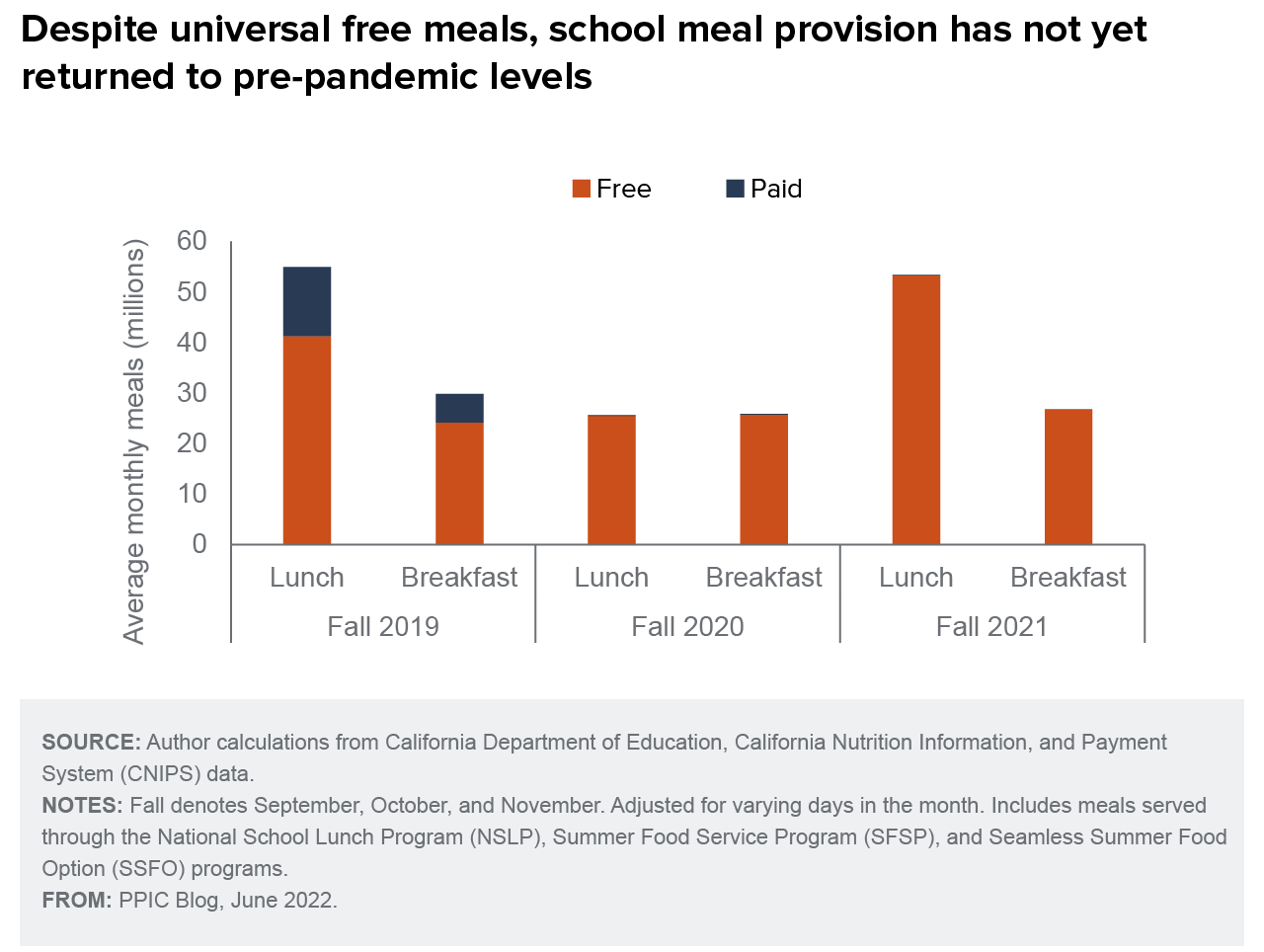
Looking beyond the statewide numbers, we can see significant variation across counties. While over half of California’s 58 counties are still serving fewer meals than they were before the pandemic, some counties have greatly increased the number of meals provided. Among the ten counties serving the most meals, Orange, San Diego, Santa Clara, and Alameda saw notable increases from 2019 to 2021, ranging from 5%–25% in the case of lunches and 8%–61% for breakfasts.
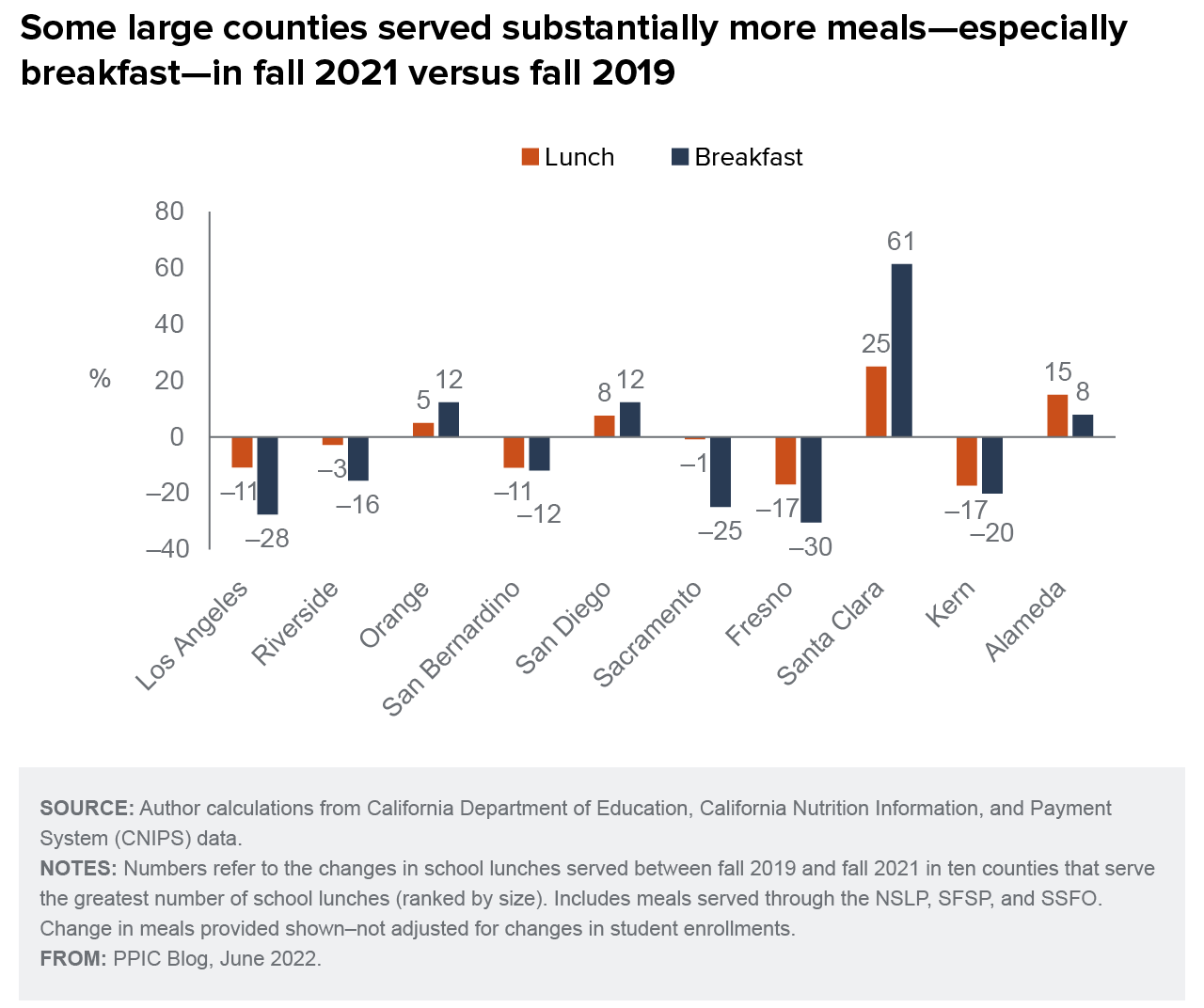
Despite the progress some schools have made, price inflation is affecting districts, and schools are reporting supply chain problems. In January, the USDA announced increased federal funding for school meals to help address rising food costs and provided additional funds to deal with supply chain disruptions.
Nationally, schools are often the best source of nutritious meals for schoolchildren, and students eat more than a third of their total calories at school. By supplementing family food budgets, school meals also lower poverty. As the pandemic has shown, many schools have long been hubs for children’s physical, academic, and emotional well-being—and school meals are an important part of this equation.
Federal funding for free school meals will continue through the end of June 2022. Then, beginning in the 2022–23 school year, California will be the first state in the nation to provide state funding for universal school breakfast and lunch. With this effort, the state—in partnership with school districts—could ameliorate food insecurity among schoolchildren while fostering a positive culture around school meals.
